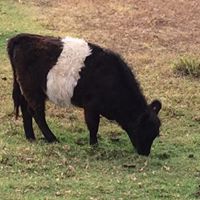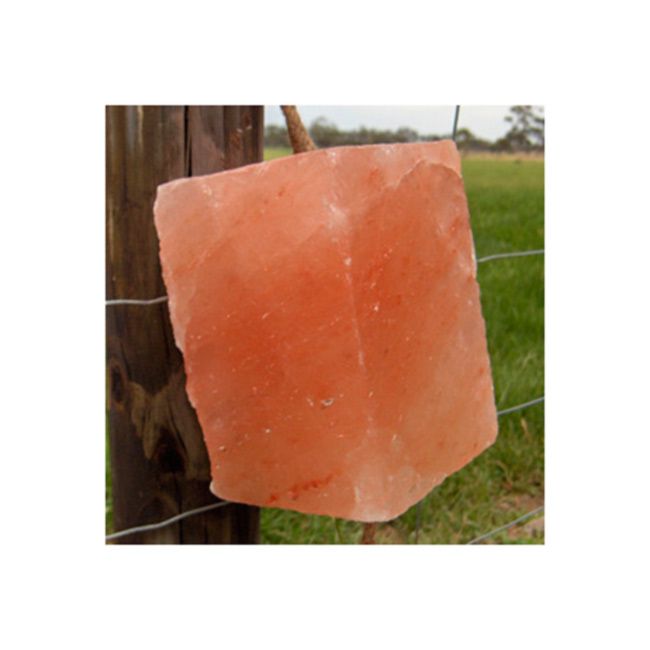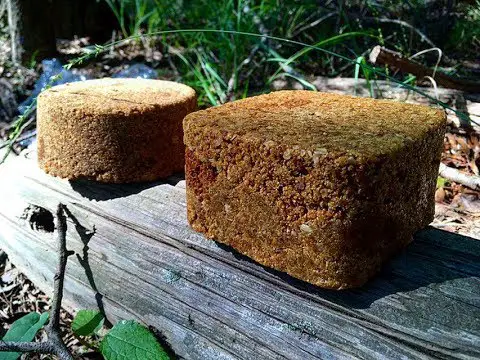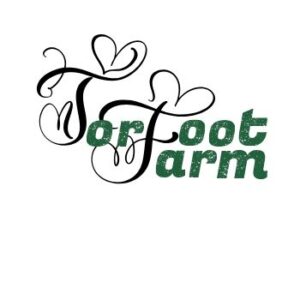
Cattle Farmers have learned over centuries of farming that if you want an animal to produce at its peak, then the pastures must be top quality both in type and mineral content. The two do not necessilarly go together quite so easily but generally they do.
Good hay with multiple varieties of herbage in it must be available when required, and like quality pasture, it must be grown on remineralized land. Crushed barley with, in some cases 10% lupin and chaff added makes a good bail feed to which minerals can be added as required. But how do we know what is required?
Most farmers now know that dry cows coming up for breeding must be adequately fed or they will not be able to produce the volume of milk the calf will require without draining their systems of minerals during the early part of lactation.
Unfortunately past and current years of drought has made this more difficult and expensive for the average farmer. Bearing a calf actually makes more demands on the systems of the cow than producing milk. If a cow is not fed what amounts to a milkers full amount of minerals during the pregnancy then toxemia is almost inevitable.
The amount of concentrates and hay feed required will be dictated by the condition of the cow prior to joining and environmental factors like the amount and quality of grass available.
There are huge differences in management styles including but not limited to organic or conventional setups. In this article we are dealing only in the organic.
Water Intake
Good quality, clean and fresh water should be available at all times and it should not be fluoridated or otherwise treated. Bore water or rain water is suitable and cattle often prefer rain water. These days bore water should be tested as, unfortunately, spray residues, and excess nitrogen can end up in underground aquifers.
Lactating cows will consume twice their normal amount of water, so make sure you have ample supply before considering joining of cow to bull.

Sodium
Salt is often added to premixed or pelleted bail feeds, with no reference made to requirements of the animals. Often licks will contain 80% or more sodium are put out without consideration of salt levels in the existing pasture.
Sodium levels that are too high can inhibit the uptake of potassium and other trace minerals. Cattle whose mineral needs are fully met rarely take much salt voluntarily. Salt should be left out in the paddock in the form of natural rock salt for cows to help themselves when they feel the need for it.

Protein
Some would say the higher the protein the better when it comes to feed but many troubles can be caused in conventional farming from this practice. Protein percentages of around 12% are reasonable and rarely produce sick animals. The incidence of mastitis and acetonemia on some conventional farms is staggering. The use of SuperPhosphate has been linked to many common illnesses in cattle and yet it still seems these farmers have not made the connection.
Anemia
Many soils contain excess iron and are often almost totally deficient in copper. Without copper the iron cannot be synthetisized by the cattles systems. So the addition of iron to feed regimes is not the answer.
If iron is actually to low, it has been suggested by some that adding fish meal or extract supplements to the feed. There are organically certified brands available. Giving cattle a lick tailored to any deficiencies noted after a soil test will provide trace elements at optimum quantities.
A homemade Lick block or added to the feed ration suggested by Pat Coleby is provided below and has been tested by a variety of farmers and authorities for its ability to provide the necessary minerals.

- 50 pounds of dolomite
- 8 pounds copper sulfate
- 8 pounds 90% sulfur dust
- 8 pounds of urea free seaweed meal
This base lick recipe can be used either on demand or in bail feeding. The addition of other trace minerals would depend on soil analysis. Zinc, boron, or cobalt might have to be added if their absence was causing trouble. Seaweed contains all three, as well a selenium, iodine and a host of other minerals and is often all that is needed according to Pat Coleby.
The lick should be well mixed such as with a cement mixer and put out in containers protected from heavy rain. Rain on this lick can mean the copper will be leached out in a very short time. Testing has shown that copper is somehow inactivated by dolomite when it gets to wet.
Carbohydrates
Cattle depend on having a full rumen of bulky feed to assist in equalising their body temperature. If they do not recieve adequate caarbohydrates made up of bulky feed it will not matter how much protein is supplied. They will not remain healthy. The ideal ratio appears to be in the order of 6 carbohydrates to 1 of protein. This is not just in the bail feed but includes the hay eaten during the day. If on irrigation, the grass may not be very high in protein unless a program of land improvement has been in place for a minimum of 2 years.
Dry Feed
In the winter copy of CRT Agri-News 1993, a most helpful energy table of various feeds was published. The intention was to point out the best way of creating cost-effective feed but it has a much more valuable and practical application in my view. It can be used in the planning of a balanced ration, particularly in drought times. I have reproduced it below.

Energy Value of Feed
| Supplement or Concentrate | MJ/kg | Dry Matter % |
| Oats | 11.9 | 90 |
| Barley | 13.0 | 90 |
| Wheat | 13.6 | 90 |
| Maize | 13.9 | 90 |
| Barley Bran | 9.2 | 88 |
| Wheat Bran | 10.0 | 86 |
| Wheat Pollard | 11.9 | 87 |
| Rice Pollard | 14.1 | 90 |
| Peas 23% Crude Protein | 13.0 | 90 |
| Lupins 30% Crude Protein | 13.0 | 90 |
| Brewers Grain | 11.2 | 25 |
| Clover Hay | 9.1 | 83 |
| Good quality Hay | 8.5 | 83 |
| Average quality hay | 8.0 | 85 |
| Poor quality hay | 7.0 | 90 |
| Oaten Hay | 7.7 | 90 |
| Lucerne Hay pre-flowering | 8.9 | 85 |
| Lucerne Hay flowered | 8.1 | 90 |
It is of interest to read the energy values of the various feed types. Barley, for example, has the same value as lupins and is far cheaper, nor does it have the unfortunate side effect of bloating or iodine depletion caused by feeding high amounts of lupin. Barley also has the great advantage of supplying plentiful vitamin B5 needed by all animals.
Legumes
Whatever kind you use all legumes should always be fed with caution as they all (even Tagasaste) can cause iodine deficiencies. Lupins should not be fed at a rate higher than 10% of the total feed at any time.
Feeding extra fat
In years gone by it was quite conventional to feed cattle used cooking oils as a supplement. Apart from being one of the most carcinogenic materials known, all heated fats come into this category, it does nothing for the health of the cattle. Fat tends to line the gut and inhibit absorption of carbohydrates. If you feel you animal needs more fat in their diet then best to look for the cause rather than treat the symptom. Rice pollards would provide extra fat and be beneficial if required but better to find out what is causing your cattle to look lean first.
A word on Scours
When an animal is over fed protein and pastures of low mineral and nutritional values scours will often be the result. To much of any one thing is not good for your cattle. Test your pastures and soils to determine the mineral content and work toward balance.
Sulfur
If the above feeding advice and the use of homemade lick is followed many of the common problems will be eliminated according to Pat Coleby. The exception being a lack of sulfur in Queensland soils causing buffalo fly attacks meaning that at times we may need to double up on the sulfur.
In a country like Australia with poor soils, dolomite in the lick ensures that mastitis is at an absolute minimum. However, this does not work in the United States as the feed proteins are naturally too high. This is where the copper in the form of sulfate in the lick comes into play. Dolomite contains calcium and magnesium.
The allowance of yellow powdered sulfur in the lick ensures proper digestion – it should also stop lice should they be a problem. Sulfur is essential for the amino acids in the gut to perform so that the cow can assimilate selenium.
Seaweed
Seaweed, in some form is fed nowadays worldwide, the quality of feedstuffs having deteriorated so much that seaweed has become a necessity. It is included as part of the general purpose lick recipe above but it may be left out for animals to freely take on their own. It is possible to buy high-grade weed powder in bulk at a discount for those who use large quantities.
African Grasses
Cattle fed on African type grasses must be given the above mentioned licks. The majority of these grasses cause calcium/magnesium and iodine deficiencies due to high oxalate levels. This can and does affect bulls and is not worth the risk.
Urea
Except when in a matter of life and death, as when feeding quite indigestible feeds in extreme drought conditions avoid using urea. It is a poison and inadmissible in feed if seeking organic certification. Given the information already discussed in this article, using a standard stock lick provides all the necessary additional minerals for your cattle making the use of urea unnecessary.
For those using the round bales of hay, which most farmers do these days, feeding the necessary minerals is very easy. One method is to roll out the bale and then use a spreader to distribute the lick mixture along the hay ensuring that all animals have access to the minerals they require. This need not be done every time but around every ten days or so.
My hope is that with all this information you have now a better understanding of the needs of your cattle and how to best provide them. So go forth and make your own cattle licks and stop wasting money on those that are not designed to do anything other than keep your hand in your pocket.
References
Natural Cattle Care Pat Coleby
Keys to Feeding Cattle for Slaughter John E Hutchinson, Agriculture Extension Service Texas University
Clean Beef Cattle for Slaughter – A producers guide Food Standards Agency of United Kingdom
How to Calculate Feed Needs – https://www.grass-fed-solutions.com/beef-cattle-slaughter-weight.html
5 Tips for Finishing Cattle on Grass – https://www.agriculture.com/livestock/cattle/to-capitalize-on-the-grass-fed-beef-craze-proper-finishing-is-key
